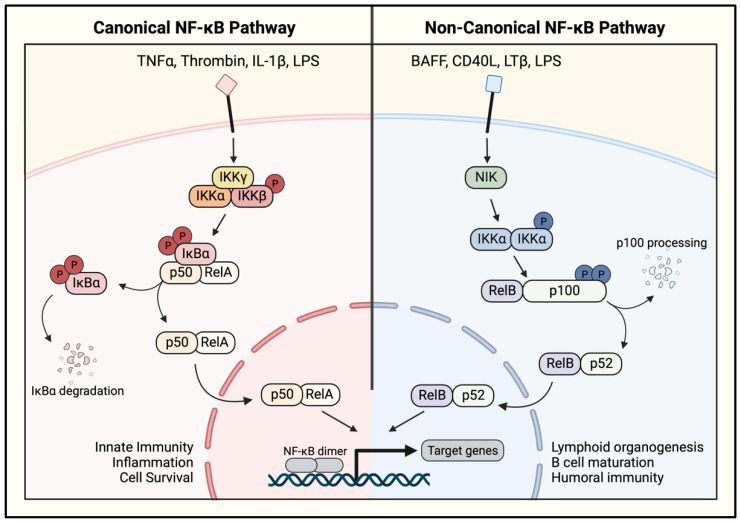Figure 6.
Canonical and noncanonical NF-κB pathways. (Left) The canonical pathway is activated by proinflammatory stimuli including TNFα, thrombin, IL-1β, and LPS, among others. Interaction of extracellular stimuli with cell surface receptors results in activation of the IκB kinase (IKK) complex, including the catalytic subunits IKKα and IKKβ. These subunits phosphorylate IκBα, which leads to its ubiquitination and degradation, exposing the NLS on the NF-κB dimer. The NF-κB dimer, predominantly a heterodimer of p50-RelA/p65, translocates to the nucleus and binds DNA to stimulate the transcription of innate immunity, inflammatory, and cell survival genes. (Right) The noncanonical pathway is activated by BAFF, lymphotoxin-β (LTβ), CD40L, and LPS, which signal through NF-κB-inducing kinase (NIK) to activate the IKKα homodimer. IKKα phosphorylates the NF-κB protein p100 to stimulate its processing into p52. This processing exposes the NLS on p52, allowing p52/RelB heterodimers to translocate to the nucleus and activate gene transcription. The noncanonical pathway primarily regulates expression of genes involved in B cell maturation and lymphoid organogenesis. (P denotes protein phosphorylation).

